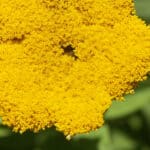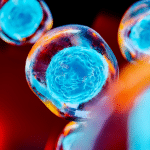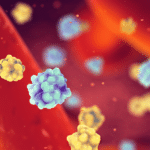CBD could protect against hypoxic ischemia, a complication that prevents a baby from getting enough oxygen during birth. Researchers in Spain show that its protective effects could have to do with the dimerization of CB2 and 5-HT1A.
Hypoxic ischemia is a complication that can occur during birth wherein the baby can’t get enough oxygen, often causing some degree of brain damage. A number of treatments, including cannabidiol, can limit the extent of damage according to preclinical research. A study from a team of Spanish scientists explores the molecular mechanism for CBD’s protective effect. Previous research has shown that cannabinoid and serotonin receptors (CB2 and 5-HT1A, respectively) are required for CBD to reduce damage. This new paper suggests that the two receptors bind to each other — forming what is called a dimer — in response to oxygen deprivation. Normally, CB2 and 5-HT1A each signal through an inhibitory protein called Gi/o; after hypoxia, the signaling of Gi/o has a cytoprotective effect, preventing cellular damage. By dimerizing, the two receptors increase the likelihood of being mutually activated or inhibited. Applying agonists of both the CB2 and 5-HT1A receptors had an additive protective effect. On the other hand, blocking one receptor inhibited the other, an effect called cross-antagonism.
Adrian Devitt-Lee is a research scientist and longtime Project CBD contributor. © Copyright, Project CBD. May not be reprinted without permission.







